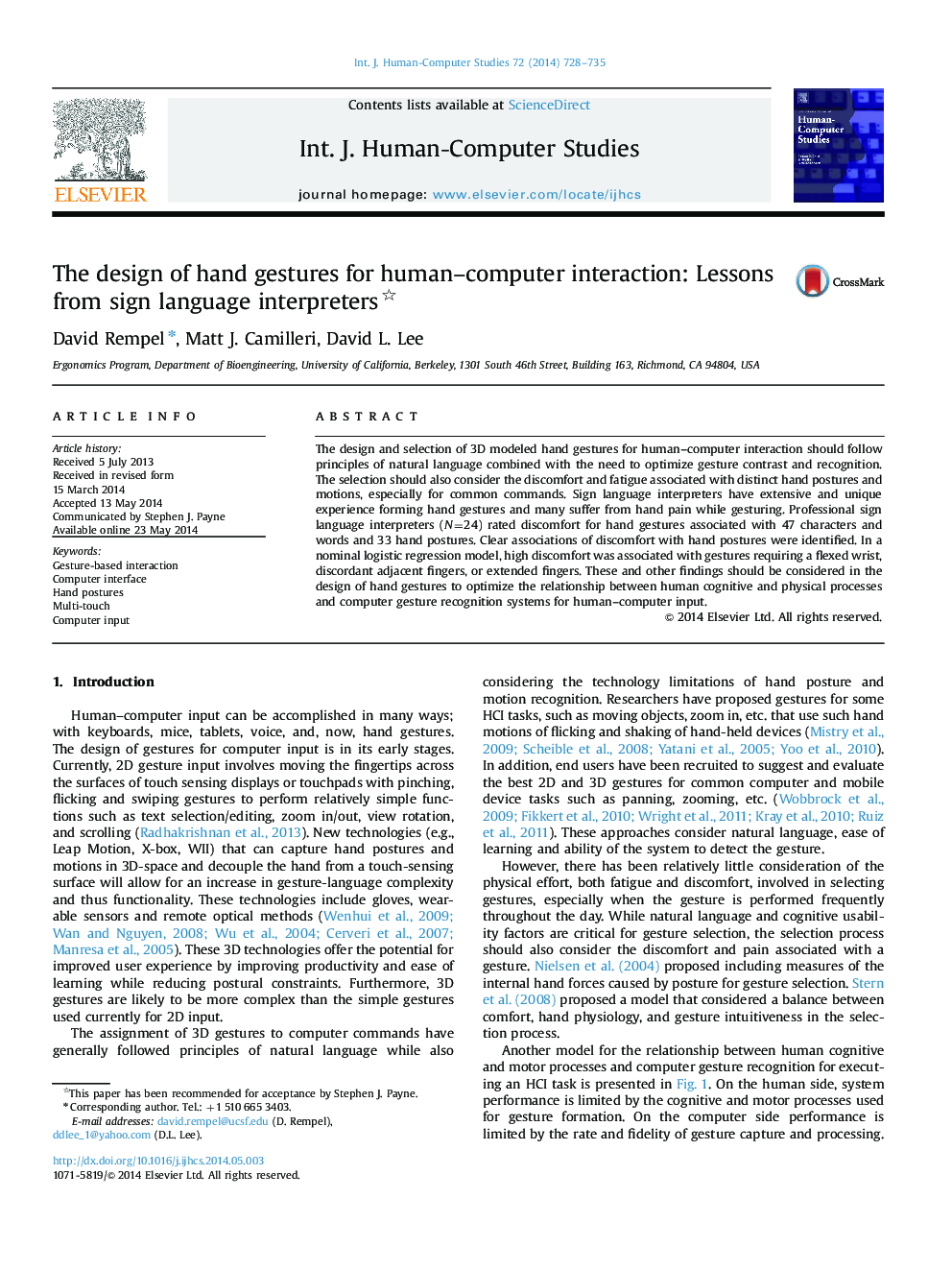| Article ID | Journal | Published Year | Pages | File Type |
|---|---|---|---|---|
| 401159 | International Journal of Human-Computer Studies | 2014 | 8 Pages |
•The discomfort levels of gestures should be considered in the design gesture languages for HCI.•Comfortable gestures are those with the wrists straight or adjacent fingers similarly shaped.•Uncomfortable gestures are with wrists flexed, fingers extended or discordant adjacent fingers.•Uncomfortable arm postures are elbows flexed, forearms rotated or shoulders externally rotated.
The design and selection of 3D modeled hand gestures for human–computer interaction should follow principles of natural language combined with the need to optimize gesture contrast and recognition. The selection should also consider the discomfort and fatigue associated with distinct hand postures and motions, especially for common commands. Sign language interpreters have extensive and unique experience forming hand gestures and many suffer from hand pain while gesturing. Professional sign language interpreters (N=24) rated discomfort for hand gestures associated with 47 characters and words and 33 hand postures. Clear associations of discomfort with hand postures were identified. In a nominal logistic regression model, high discomfort was associated with gestures requiring a flexed wrist, discordant adjacent fingers, or extended fingers. These and other findings should be considered in the design of hand gestures to optimize the relationship between human cognitive and physical processes and computer gesture recognition systems for human–computer input.
